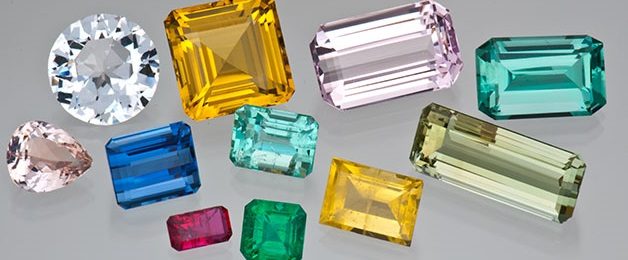This 140.5 carat diamond, with an incredible purity and superb colour, is considered one of the most beautiful diamonds in the world, and it has an intriguing story. The exceptional journey of this gem begins in India, it crossed through Europe over the years where it stolen, hidden and sold, but it always maintained a strong connection to France. Today this gem is on display in the Apollo Gallery of the Louvre, in Paris.
When I was asked to contribute to this blog about gemstones, the first gem that came to mind was the diamond. The most prestigious gem! So I did some research on famous diamonds and came across the wonderful story of the Regent. Filled with travel and adventure, I was immediately drawn to this gems story.

The Regent
The Regent started its journey in India
To start this journey, we must go back more than three centuries. Unfortunately there is no clear source of this gem, although legend has it that a slave in the Indian region of Golconda found the gem and hid it inside a large wound in his ankle, which he then bandaged to further conceal. He wanted to exchange the gemstone for his freedom, so he asked an English sailor to take him to a country where he could be free. The sailor agreed, but shortly after broke his promise, he stole the diamond and killed the slave. The story goes that he sold the diamond to an Indian merchant who later sold it to the British governor of Madras, Thomas Pitt. The sailor is said to have later hung himself out of shame of his actions.
From this legend, one that that we know to be true is that the governor, Thomas Pitt, came into possession of the Regent in 1698.
The journey to England, Russia and France.
The rough diamond weighed 410 carats, Thomas Pitt arranged for the diamond to be sent to his son in London to be cut by the jeweller Harris. It took him two years to cut the ring, and cost a fortune, Harris used ancient techniques from Venice to achieve the incredible ‘brilliant’ cushion cut. In addition to the main stone a few more diamonds were cut from the raw crystal which were given a rose-cut and were later sold to the Russian Tsar Peter the Great. The gem was nicknamed the “Pitt Diamond” as it was presented to the great European leaders for sale.
Once the gem was cut, problems arose as nobody wanted to buy the diamond, even Louis XIV refused to buy it! It was eventually purchased by French Regent, Duke Philip of Orleans, on the advice of his friend Saint-Simon. The diamond was bought in 1717 for £135,000, which is an estimated £18,520,000 today and adopted the name “Regent” in honour of his purchaser.
The stone became a symbol of the French monarchy, Louis XV wore the “Regent” in 1722 at his coronation, the gem was set into his crown along with other famous diamonds like the “Sancy”. The gem was placed in another crown made for his grandson, Louis the XVI, which he wore at his coronation. Even Marie Antoinette was known to have adorned the “Regent” at times.
During the French Revolution the gem was stolen along with other jewels of the French Crown. Among the stolen gems were the aforementioned “Sancy” and the “Bleu de France”, from which the Hope Diamond was later cut. The Regent disappeared for just over a year, and it was recovered in the rafters of a Parisian hotel on Avenue Montaigne.
Napoleon diamond
The Regents’ journey was not quite finished yet. Considered a talisman and a symbol of the French royal power, Napoleon Bonaparte, sent the stone to be fit into the pommel of his swords on various occasions by goldsmiths Odiot, Boutet and Nitot. Napoleons second wife carried the gem back to Austria upon his exile, although it found its way back to France shortly after. The gem was finally set into a Tiara for Empress Eugenie, the diadem can currently be admired in Louvre.
In 1887 a large selection of the French crown jewels was auctioned off, although not the Regent. Some pieces were sold to famous jewellers including Boucheron and Tiffany & Co.
The gems last adventure took place during World War II. The Regent was hidden in the plaster of a fireplace in the Chambord castle, to ensure it stayed safe during the war. It was returned to Paris once the war ended, to its current home of the Louvre. The Regent is one of the most beautiful diamonds in the world and with its exciting history will without doubt remain closely linked to the history of France.
Shop brilliant Diamond Jewellery at Rocks & Co today!






